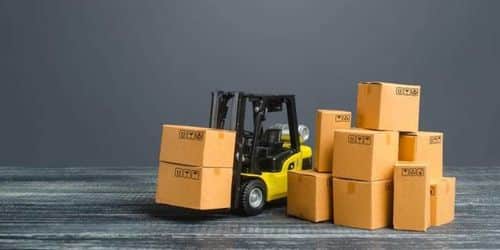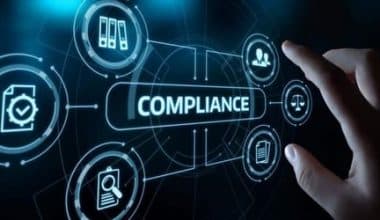Material management involves a process that monitors your materials, goods, and products. With a material management system, you can keep track of every activity involving your materials, including the raw material and finished product, all from one location. Well, you must first of all, understand the material management system and how it works, hence the purpose of this article
Understanding Material Management
In a company setting, material management refers to the process of organizing, planning, and coordinating logistical operations, including inventory and supplies. Therefore, its main goal is to regulate the flow of supplies and tools by requesting them beforehand, buying or renting them at a fair price, and ensuring their readiness for use, a vital component of the supply chain process. It also guarantees that experts appropriately and efficiently route the supplies needed for production processes.
What is a Material Management System?
The material management system, or “MMS,” is a comprehensive method for managing daily supply chain activities. MMS covers the entire material life cycle, from initial receipt (check-in) to disposal. It also tracks every item down to individual units wherever it is in the laboratory.
The system keeps track of all the items in locations that traditional ERP/Stock systems can’t, like inside lab analysis locations, refrigerators, and even disposal bins. Now you see why a material management system is definitely worth it.
The productivity and cost-cutting goals of MMS are to achieve more with fewer resources. That is to maintain and grow operations while also exercising cost control. It is also essential to optimize the purchase, storage, and consumption of all materials.
What Is the Importance of a Material Management System?
- A material management system helps to keep the material content of the total cost at a reasonable level.
- Proper storage of materials also helps in reducing waste. These factors help in controlling the cost of products. Sometimes, the cost of indirect materials also increases the total cost of production because there is no proper control over such materials.
- When the equipment is properly utilized then there are no breakdowns due to the late supply of materials.
- It prevents the loss of direct labor.
- It minizines the wastage of materials at the stage of storage and keeps it under control.
The Benefits of a Material Management System
Organizations are becoming more aware of the need to concentrate on the materials management process as a proactive, observable entity that significantly affects construction costs. Moreover, they have developed a total concept function recently. They include
- Vendor evaluation
- Purchasing
- Expedition
- Warehousing
- Distribution.
Improved labor productivity has reduced the surplus of bulk materials, decreased the need for materials management personnel, and cash flow savings are all tangible results of these materials management systems. The development and implementation of these systems can be expensive, but they are worth it, especially when the crafts use them to plan their work around the availability of bulk materials.
The Raw Material Management System
The primary production or manufacturing of goods uses raw materials. On commodity exchanges around the world, raw materials are traded as commodities. In the factor market, traders buy and sell raw materials because they, along with labor and capital, are production factors.
In other words, the raw material can be a feedstock, an unprocessed material, or a primary commodity. It is a foundational component used to create energy, goods, finished goods, or intermediate materials that serve as feedstock for finished goods to come.
They also refer to substances that have not undergone any processing or have undergone very little processing, such as raw latex, crude oil, cotton, coal, raw biomass, iron ore, air, logs, and water, or “any product of agriculture, forestry, fishing, or mineral in its natural form or which has undergone the transformation required to prepare it for international marketing in substantial volumes.”
Essentially, raw material management software is a system solution designed for managing the process of raw material inventory management.
Use of Raw Material Management System
The management of raw materials is essential to the delivery capacity of your business. A good management system operates with assurance in volatile markets with high purchasing volumes while ensuring the required raw material quality.
However, other factors, like effective procedures or corporate social responsibility (CSR), are essential to make the best possible contribution to the success of the business. By monitoring your suppliers and distributors, raw material management software enables you to keep track of the status of both your raw materials and your final goods. The quality of the final product is determined by the quality of the raw ingredients.
For example, inventory software enables you to track inventory as it moves between multiple locations—such as from your warehouse to your stores. For companies that need to manage multiple warehouses, inventory software is thus critical, as it enables companies to ascertain inventory levels at various locations and therefore determine where more inventory is required.
Examples of a Raw Material Management System
#1. Zenscale
This is one of the top providers of cloud-based ERP solutions. They include Payroll, Financial Accounting, Material Management, and Production Planning and allow you to run your company with just a few clicks. They provide totally individualized, perceptive solutions that address all the necessities for smoothly running and maintaining a firm.
These software solutions virtually provide processes starting with an entrance route and ending with the delivery of the final good or service to the customers. It offers a self-service portal, tracking for vacation and leave, tax compliance, payroll reporting, and other services.
#2. EAMbrace Inventory Management
The EAMbrace Inventory Management Solution enables the business to track consumables and spare parts needed for asset repairs and maintenance. It updates the number of consumables and spares that have been used up while providing a real-time prediction of the stock on hand.
It is a material management program that meets the needs of all sectors in asset management. Asset accounting, asset lifecycle management, disposal, depreciation, document management, inventory tracking, barcoding, and audit trails are all provided.
#3. Tick Software
This is a time-tracking program run by Jacksonville, Florida-based Higher Pixels (formerly The Molehill), which also operates desktop and mobile applications. Tick provides online time monitoring and reporting services. It uses a timer or manual entry to track time based on clients, projects, and tasks.
It is a material management program that enables you to manage profitable projects and keep tabs on your spending. This software includes an employee database, billable and non-billable hours, and Mobile Time Tracking.
#4. Medico SG (Samples & Gifts)
This is material management software for healthcare providers like physicians, dentists, and surgeons. It offers features like EMR/EHR, Multi-Office, E-Prescribing, Patient Billing, Patient Records, Patient Scheduling, and Patient Portal. It automatically sends out samples, presents, and promotional products based on stock level.
#5. FactsERP
FactsERP is an ERP software solution that has been specifically created to satisfy the needs of the UAE market. It is completely customizable. Since it has been in business for more than 15 years, t is the largest software development firm in the Middle East. It offers HR and payroll software.
It reduces the manufacturing bill of materials by aiding commerce, hospitality, and other businesses using construction material management software. They provide financial management, reporting and analytics, HRM, order management, warehouse management, SCM, and CRM.
#6. TallyPrime
The material management system is renowned for its accounting, stock control, reporting, and payroll functions and is one of the most popular business management programs on the planet. TallyPrime is economical for small and medium businesses because you don’t have to pay extra for extra features.
#7. Busy accounting
Several industries, including FMCG, Retail, Manufacturing, and Distribution, employ the dependable building material management software Busy Accounting Software. It provides a wide range of functions for a minimum bill of materials price. It is a straightforward yet effective business accounting program that complies with GST and VAT and includes all the features you require to expand your company.
#8. ClarityERP
This is a building materials program that aids in lowering your bill of materials. Capacity Management, Accounting Integration, Quality Control, Quality Management, and Shipping Management are just a few of the robust job shop and manufacturing solutions it provides.
#9. Compiere
This material management program primarily supports the service and distribution sectors. Its features include distribution management, purchase order management, warehouse management, project management, inventory management, customer relationship management, reporting/analytics, and financial management.
It is mainly for Small and Medium-sized Enterprises in the distribution, retail, service, and manufacturing industries, Compiere is an open-source ERP and CRM business solution.
#10. Novatek’s Material Management solution
This material management system from Novatek is an integrated module that will effectively help enterprises manage their incoming raw materials, in-process materials, and finished items from the time of the initial registration of the material to its finished product. It helps businesses produce top-notch goods and successfully bring them to market. It is a solution that is totally scalable and made for all sizes of companies.
In order to enhance operational effectiveness, producers must ensure compliance with both internal company regulatory norms and external regulatory standards. This is where Novatek Material Management System comes in.
The Material Management Process
#1. Materials Requirements Planning
This is one of the most important steps in the process because it accounts for a large portion of the total financial investment. It has a direct impact on an organization’s profits because the amount of materials purchased is directly proportional to the amount of money spent. The quantity of materials used necessitates careful planning. Companies are increasingly adopting the JIT (Just in Time) model, which significantly reduces inventory size.
#2. Inventory Planning and Control
“Inventory” is the term used to describe the various goods and quantities that a company has on hand at any given time. The goal of this pricing strategy’s optimal practice is to drastically reduce the inventory size. The expenses related to keeping an inventory are significantly decreased as a result. This is accomplished by experts in the field buying the materials just before production or before releasing a product into stores.
There are three types of inventories:
- inventory for raw materials
- inventory for purchased goods
- inventory for finished parts and components
#3. Purchasing
The cost-effective acquisition of various materials is how most businesses generate their profits. A business may occasionally devote a significant amount of its total capital to the purchase of materials. Consequently, effective purchasing is the material management process’ main goal. Because lowering the cost of purchases also aids in raising profits.
#4. Flow and Supply of Materials
In supply chain management, material management is essential. Throughout the production process, material managers work to ensure a constant supply of materials. They disperse these resources among various production facilities. If the production process is interrupted, as is the availability of material supplies, by poor management or a lack of inventory. This can result in monetary losses, delay the sourcing of replacement materials, and interfere with production schedules.
#5. Quality Control of Materials
Making sure that the materials used in production are of the highest caliber is crucial. If the initial raw materials are of high quality, then the ultimate goods’ quality would also be higher. The best materials must be located for any type of production. Quality control is used by professionals for a variety of purposes. Factors to consider when reviewing these materials include:
- Aesthetic appeal
- Dependability
- Dimensions
- Durability
- Thermal and weather performance.
All of these important components can have an impact on the final product’s value.
What Are the 4 Basic Needs of Material Management?
- It ensures that there are sufficient materials on hand in case of emergency
- To pay the lowest possible price while maintaining the required quality and value for purchases materials
- To reduce inventory investment
- To function efficiently.
What Are the Methods of Material Management?
Material management includes the process that ensures you are picking the right materials:
#1. Procurement
This refers to the purchase of products or services, usually for commercial use. due to the requirement for businesses to procure goods or services, usually on a sizable scale. It is frequently in connection with enterprises.
#2. Time to order
When a trader uses the term “time-of-day order,” they are referring to a form of order that enables them to specify the time of day they would like their order to be filled. Time-of-day orders can be carried out for buy or sell requests for stocks or other financial assets. Timing is everything when purchasing and selling stocks.
#3. Materials cost and planning
When planning for the costs of raw materials and semi-finished goods, you should take into account both the expected volume of production and the cost per completed product unit.
A crucial step in the manufacturing process is materials planning, which guarantees that the right quantity of raw materials, supplies, and finished goods are accessible.
#4. Optimizing inventory
An approach to balancing service-level goals over a wide range of stock-keeping units while taking demand and supply volatility into account is inventory optimization.
Keeping the appropriate amount of inventory on hand to satisfy client demand is considered to be the best practice in online commerce.
#5. Delivery
This refers to the transportation that is the carrying and turning over of letters, and goods to a designated recipient or recipients. It is very essential in material management as it is a factor that contributes to the availability of goods.
#6. Kitting
In order to streamline order fulfillment and save time and money, many industries use a process called kitting. So what exactly is the use of kitting?
In logistics, kitting refers to the process of assembling several products into a single “kit” that is supplied to the consumer. Businesses and logistics providers can reduce costs by streamlining transportation operations.
What Is Sap Material Management?
SAP MM (Material management) is concerned with the management of an organization’s materials, i.e., its resources. These resources may include people, labor, and materials. MM (Material Management) functionality includes purchasing, inventory management, valuation and assignment, batch management, and classification. SAP Material Management is a core module of the SAP ERP (Enterprise Resource Management) system that manages an organization’s entire material supply chain and inventory management processes.
SAP MM is essentially a component of Logistics. When discussing SAP ERP software, it is regarded as one of the most important modules. The MM application module enables the user to manage and obtain data in a very organized manner. The SAP MM module includes numerous features, such as receiving. and purchasing goods, material storage, inventory and most importantly planning based on consumption.
What Are the Problems of Materials Management?
- Bid procurement
- Material purchasing.
- Material procurement.
- Jobsite storage and handling
- Acknowledgment.
What Skills Are Required to Be an Effective Materials Manager?
A materials manager is responsible for organizing a company’s inventory of raw materials and other supplies, as well as overseeing the purchasing processes for these items.
Material managers collaborate with other managers to identify supply needs, plan and purchase supplies and materials, and coordinate and oversee receiving procedures. However, warehouses are where they are most commonly used. Materials managers work in a wide range of settings.
- Outstanding organizational and planning abilities.
- Excellent written and verbal communication skills.
- Excellent interpersonal skills
- Demonstrated ability to collaborate effectively with all levels of management and staff.
- Expertise in inventory reporting systems.
- Microsoft Office Suite or similar software proficiency
Conclusion
Material management systems embrace all of the activities relating to materials and are a basic business function that adds value to a finished product. Moreover, there are several objectives that can be easily and effectively accomplished with the aid of MMS.
FAQs
How to manage raw material inventory for your business?
The total cost of the parts, pieces, and materials used to construct your products is your raw material inventory.
Utilizing a raw material inventory management system is the first and most crucial step. Your raw material inventory calculations will become more precise, automated, and frequent thanks to the several platforms that are accessible, each with specific advantages.
How many types of material are there?
Materials can be classified into four main groups: metals, polymers, ceramics, and composites.
What is the full form of EOQ?
Economic order quantity (EOQ) is a computation that businesses use to determine the appropriate order amount that will allow them to meet demand without going overboard. To reduce holding expenses and surplus inventory, inventory managers calculate EOQ.
References
Related Articles
- INDUSTRIAL GOODS: Meaning, Characteristics, Types of Buyers
- Content Marketing Manager: Job Description, Interview Questions & Salary (Updated!)
- What is Supply Chain Planning? Detailed Guide
- How To Calculate Average Inventory- A complete Step-by-Step Guide
- SAP ACCOUNTING: What is Sap Accounting? (+ Top 2023 Courses)






